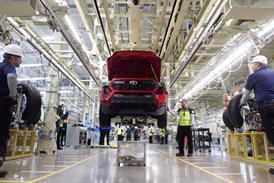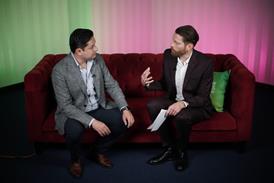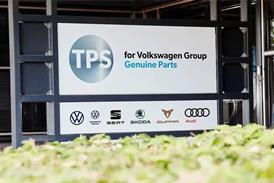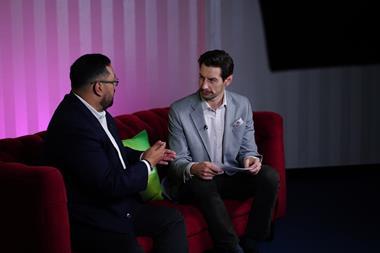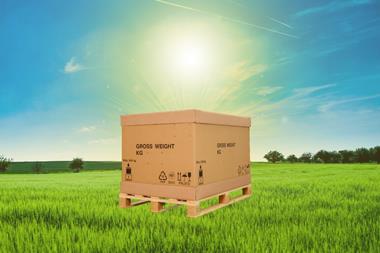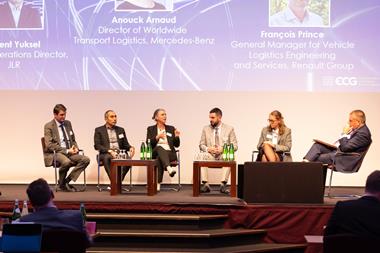
As Kia continues to defy the global downturn, the company is focusing on getting its cars quicker to market, including the entrance of Glovis, its logistics arm, into the deep-sea shipping arena. Namrita Chow reports from Seoul.
In 2009 Korea’s oldest car company, Kia Motors, beat the odds and sold more than 1m vehicles across the globe–a year-on-year increase of 20% compared to a decline of 3% across the global industry. Sales in North America jumped 11% to 346,181 units and in Western Europe sales rose 7.7% to 242,288 units. As Kia Motors turned the recession into a dramatic increase in sales, its logistics teams have had to work quickly to ship cars from Korea to markets across the globe.
Klaus Paur, an automotive expert at TNS Research
International, says there are two elements that have helped Kia to succeed in the developed car markets: global marketing and the global downturn. Kia has increased awareness of its brand with marketing campaigns and sports sponsorship activities notably around the football World Cup.
“In addition, the recent economic slowdown has favoured Kia’s market positioning in the sense that consumers around the world have become more price sensitive. Kia’s value for money proposition with recognised product quality at an attractive price level has enabled the brand to win market share in these embattled markets,” says Paur. And the ‘value for money proposition’ is also working in developing markets like China. In the mainland, Kia’s new car sales in 2009 have grown by 70%, well ahead of the overall market growth of 48%, says Paur.
All this places significantly more impetus on Kia’s vehicle logistics to move cars to market, as every day of delay could represent a lost sale, particularly for markets in Europe that were lifted suddenly by incentive programmes.
Kia sees changes for its logistics
Kia’s flagship plant is in Hwaseong, an hour-and-a-half southwest of Kia’s headquarters in Seoul. A bit farther to the southwest, it also has a plant in Seosan, a 50:50 joint venture with local Korean carmaker Donghee Auto. Both plants are strategically close to Pyeongtaek port, which is used by Kia to ship finished vehicles all over the world. Kia also has a plant in Sohari, just north of the port.
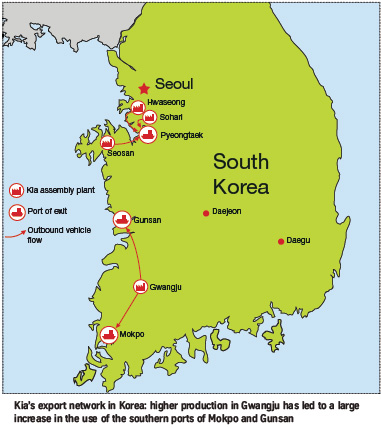 Finally, in the very south of the country lies the Gwangju plant, which is closer to Gunsan and Mokpo ports. This plant makes sports utility vehicles, commercial vehicles including buses as well as military vehicles. It also produces the Soul, Kia’s fast selling crossover SUV. Demand for the Soul has increased dramatically with Kia looking to export more than 158,000 units of the model in 2010–a 68% increase. Normally, about 60% of finished vehicles are exported from Pyeongtaek, according to Hyung-Ho Kim, who manages Kia’s export administration team at Kia HQ. The rest are divided between Gunsan and Mokpo.
Finally, in the very south of the country lies the Gwangju plant, which is closer to Gunsan and Mokpo ports. This plant makes sports utility vehicles, commercial vehicles including buses as well as military vehicles. It also produces the Soul, Kia’s fast selling crossover SUV. Demand for the Soul has increased dramatically with Kia looking to export more than 158,000 units of the model in 2010–a 68% increase. Normally, about 60% of finished vehicles are exported from Pyeongtaek, according to Hyung-Ho Kim, who manages Kia’s export administration team at Kia HQ. The rest are divided between Gunsan and Mokpo.
However, an increase in export demand for the vehicles made in the Gwangju plant means Kia will have to increase the use of ports in the south or risk spending more time and money on in-land transport to move vehicles up north. “This year we have more volume from the Gwangju plant so we are moving more to the Mokpo port,” says Hyung-Ho Kim. “That’s a big change for us.”
In Korea, Kia has a full partnership with its logistics subsidiary, Glovis, which is responsible for moving all vehicles from Kiaplants to the sea ports, according to Kwang-Hee Kim, assistant manager at the export administration team. A bottleneck that Glovis and Kia are facing this year is partly down to Kia’s success. The need to quickly move cars through ports is being slowed by both the size of ships and longer lead times for deep sea To quickly fill vessels waiting to leave ports, Soo-Chul (Ritchie) Kim, general manager of Glovis’s business team suggests more “feeder” services.
“To overcome this kind of weak point we can invite more feeder services from harbour port to final destinations. If we invite this solution we can make no delay from the factory to the final customer,” says Glovis’s Kim. Another approach, as we will see, involves Glovis playing a more active role in the shipping sector itself.
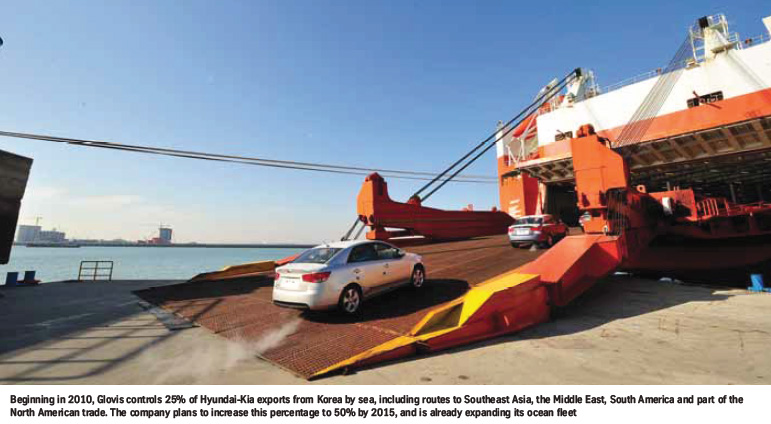
Kia’s export routes and carriers in 2010
For Kia Motors the only way to export vehicles from South Korea is by sea. As the country is not technically at peace with its neighbour, North Korea, it is not possible to use rail routes that would otherwise permit better links to China, Russia and Central Asia. Within South Korea, the longest distance by rail is from Seoul to Pusan port–a mere 450km. Therefore, trucks are used for in-land transport.
The main method used to export finished vehicles are pure car carriers but for some small Asian nations lacking ro-ro ports, Kia uses containers, according to Kwang-Hee Kim. Once vehicles reach ports in Europe, local logistics agents, often Glovis subsidiaries, transport the vehicles to various European destinations using both trucking and rail services. In Korea, Glovis is responsible for moving all finished vehicles from production sites to ports. Up to now, all vehicles have been handed over to Eukor Car Carriers at the port. However from this year, Glovis has expanded its established in-land logistics business to include deep sea shipping. “We now have our own vessel fleet, having prepared over the past few years” says Ritchie Kim in anticipation of expanding into deep sea transport for Kia and Hyundai cars. In February, the company announced that it will spend $191.5m on orders for three new pure car and truck carriers to meet demand from Hyundai-Kia, which followed the delivery in July 2009 of two used vessels of 4,000 unit capacity as well as one vessel for 6,000 units.
Although Eukor has transported all Kia and Hyundai cars from South Korea since 2002, this year Glovis will export 25% from the country, a percentage it expects to “increase year by year,” says Kim. Last year, Glovis announced that it expected to ship 50% of the volume by 2015.
The dangers of the deep sea
Kia is already a major player in the deep sea shipping market. From ports in South Korea, it ships on average five times a month each to North America’s east coast and west coast. Two ships go every month each to the east coast and west coast of South America, plus two to Central America. As the second biggest export market after the US, Kia sends four shipments a month to North Europe, three ships to the Mediterranean and two to the Red Sea.
A further three ships are sent every month to the Middle East, one to West Africa, two to the east coast of Australia and one to the west coast of Australia. A further two go to other areas in Asia and another two to China. From this year, Glovis will manage routes on some of the company’s most important future markets, including from Korea to the Middle East, Southeast Asia and South America, as well as 25% of Hyundai-Kia exports to the west coast of North America.
The company has recently seen firsthand some of the dangers on the high seas, when in January a Eukor vessel ferrying Hyundai and Kia cars from Korea to Saudi Arabia, was hijacked about 1,000km off Somalia’s coast carrying 2,405 cars, almost all of them from Hyundai and Kia. But questions circulating in the shipping industry are whether for Eukor, the long-term danger might be less pirates than Glovis. Glovis’s role in shipping is potentially contentious, since Eukor is also partly owned by Hyundai Motor affiliates and relies on the group for the majority of its business. “I don’t want to say we’re competitors,” says Glovis’ Ritchie Kim. “We share these partners in Kia and Hyundai.”
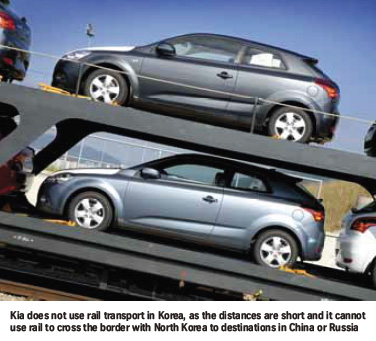 Eukor, which has thus far declined to comment on the move by Glovis, has nevertheless reaffirmed that its primary customer will remain the Hyundai-Kia Group. It is also worth noting that Glovis and Eukor share ownership that goes deeper than the Hyundai group, as the shipping conglomerate Wilhelm Wilhelmsen owns a stake in each, although it has divested some of its shares in Glovis during the past year. Glovis is also beginning to reach beyond its Korean cousins, which is likely to extend as it enters the shipping sector. In the US, for example, it currently prepares vehicles for GM and BMW prior to export to Asia, according to Glovis’s Kim.
Eukor, which has thus far declined to comment on the move by Glovis, has nevertheless reaffirmed that its primary customer will remain the Hyundai-Kia Group. It is also worth noting that Glovis and Eukor share ownership that goes deeper than the Hyundai group, as the shipping conglomerate Wilhelm Wilhelmsen owns a stake in each, although it has divested some of its shares in Glovis during the past year. Glovis is also beginning to reach beyond its Korean cousins, which is likely to extend as it enters the shipping sector. In the US, for example, it currently prepares vehicles for GM and BMW prior to export to Asia, according to Glovis’s Kim.
As vessels grow smaller orders are kept waiting
Although Glovis has not been entirely clear about its objectives in entering the shipping market, it may have as much to do with having more control on the shipping schedules as it does with cost. In recent years, average vessel sizes have increased with the average pure car carrier holding 5,000-7,000 finished vehicles, meaning it takes more time to fill a vessel. Meanwhile shipping lines have reduced their capacity and added extra calls to routes to cope with the global downturn, with longer lead times as a result. “For Kia, at the moment, the size of the ship is too big,” says Hyung-Ho Kim. “Shipping lines want to reduce the cost so ship sizes are getting bigger–but we want to ship vehicles fast to deliver faster.”
But Hyung-Ho Kim is not satisfied with how long Kia has to store its cars in ports waiting for vessels to depart. “Although we have to wait till the ship is full of cars, as a manufacturer, we are trying to do our best for our customers to receive their vehicles ASAP,” he says.
Glovis’s Ritchie Kim says a simple solution could be to use more feeder services, but this would be more expensive. The balancing act of time verses money continues to be a tough compromise, but with Glovis taking over a part of the shipping, the carmaker will have somewhat more control of its destiny at sea.
Koreans follow Hyundai-Kia
Even as Kia looks to ship more globally, it is expanding its global production. In November 2009, the first made-in- America Kia car rolled off the production line at Kia Motors Manufacturing Georgia. The plant has an annual capacity to produce 300,000 cars. In 2007 Kia opened its second plant in China as well as its first European plant in Zilina, Slovakia, which has capacity for more than 300,000 vehicles.
Hyundai-Kia’s close partners have tended to follow the carmakers to these markets, both for parts and logistics, such as tier supplier Mobis. But while the percentage of components exported from Korea is diminishing following this localisation, exports of finished vehicles are stable or increasing as plants in the US, Europe and China build only a limited variety of models, at least for now. In the long term, analysts such as IHS Global Insight have predicted decreases from Korea as global production increases. For this year, however, flows to markets such as North America are set to increase. In 2009 Kia exported 210,000 finished vehicles to the United States and Canada. In 2010 Kia expects to export around 250,000 vehicles.
Free trade agreements will help Kia
The United States and South Korea signed the United States-Korea Free Trade Agreement (Korus FTA) on June 30, 2007. If approved, the Agreement could be the most commercially significant free trade agreement for the US since NAFTA.
Under the FTA, nearly 95% of bilateral trade in consumer and industrial products would become duty free within three years of the date the FTA enters into force, and most remaining tariffs would be eliminated within 10 years. The US International Trade Commission estimates that the reduction of Korean tariffs and tariff-rate quotas on goods alone would add $10-12 billion to annual US Gross Domestic Product and around $10 billion to annual merchandise exports to Korea. For Hyundai-Kia, this agreement would mean an approximate 8% reduction in tariffs on vehicles exported into the US, giving it yet another cost advantage. But at the moment talks have stalled and the US government appears to have little political will to move forward given the deeply populist–and thus, protectionist–swing in American sentiment.
IT integration a must as Kia grows
Kia Motors is investing heavily in IT systems to give it further advantages in optimising the supply chain and reducing waste, explains Hyung-Ho Kim. Developed by the Hyundai-Kia group, APS2 (Advanced Planning & Scheduling System 2) is an integral part of managing the supply chain. Staff at the regional headquarters forecast production numbers based on input from dealers. The production plants can then order components and plan vehicle production accordingly.
For Glovis, the APS system is also extremely important. Although Glovis cannot view the screen real time, information is emailed to it so that they can plan and prepare appropriate vehicles and vessels. “To organise transportation plans we get the information of APS by email–according to the information from APS we can then arrange it from our suppliers,” says Glovis’s Ritchie Kim. But the lack of real-time visibility may be a sticking point in the process. Glovis itself is planning a new IT system. “We are developing our logistics system and will try and include APS to make it easy,” says Ritchie Kim.
Meanwhile, KDCS (Kia Distributers Communication System) links dealers and distributors to the production status of their vehicles. Once the vehicles have been manufactured, distributors can see whether their vehicles have been shipped. Distributors can then switch to a separate system run by logistics providers to check the status of vehicles in shipment. “Dealers can see what process their vehicles are in–they can see the vehicle identification numbers–check orders and they can see when their vehicles were shipped and when they will arrive,” says Kwang-Hee Kim.
The system, however, is not used consistently across the outbound supply chain. “Right now we use the KDCS for our main distributers overseas so they have information from Kia,” says Hyung-Ho Kim. Once the vehicles are with the shipping lines information is passed back to the distributers via a separate system. “Later we will integrate these two systems,” says Hyung-Ho Kim. In the future information from logistics providers will be integrated into the system bringing the carmaker and its providers closer together and increasing transparency of the process.
Such integration for systems and process will be important as Kia continues to grow and as Glovis expands its global activities both inside and outside the Hyundai-Kia group. Locked within a little peninsula with only deep sea shipping routes to connect to the big wide world, the companies have no choice but to get its cars to market as fast as possible.


